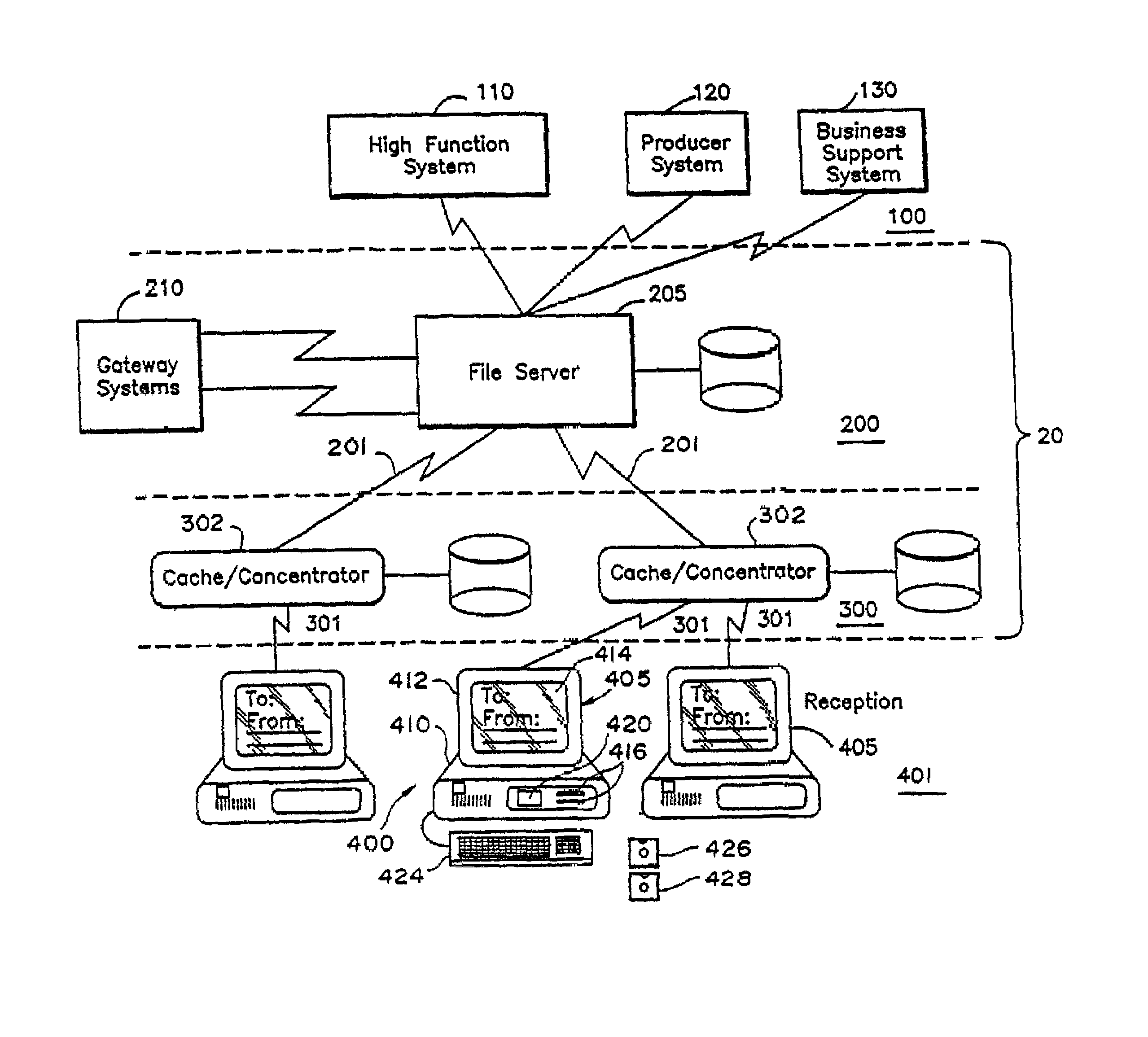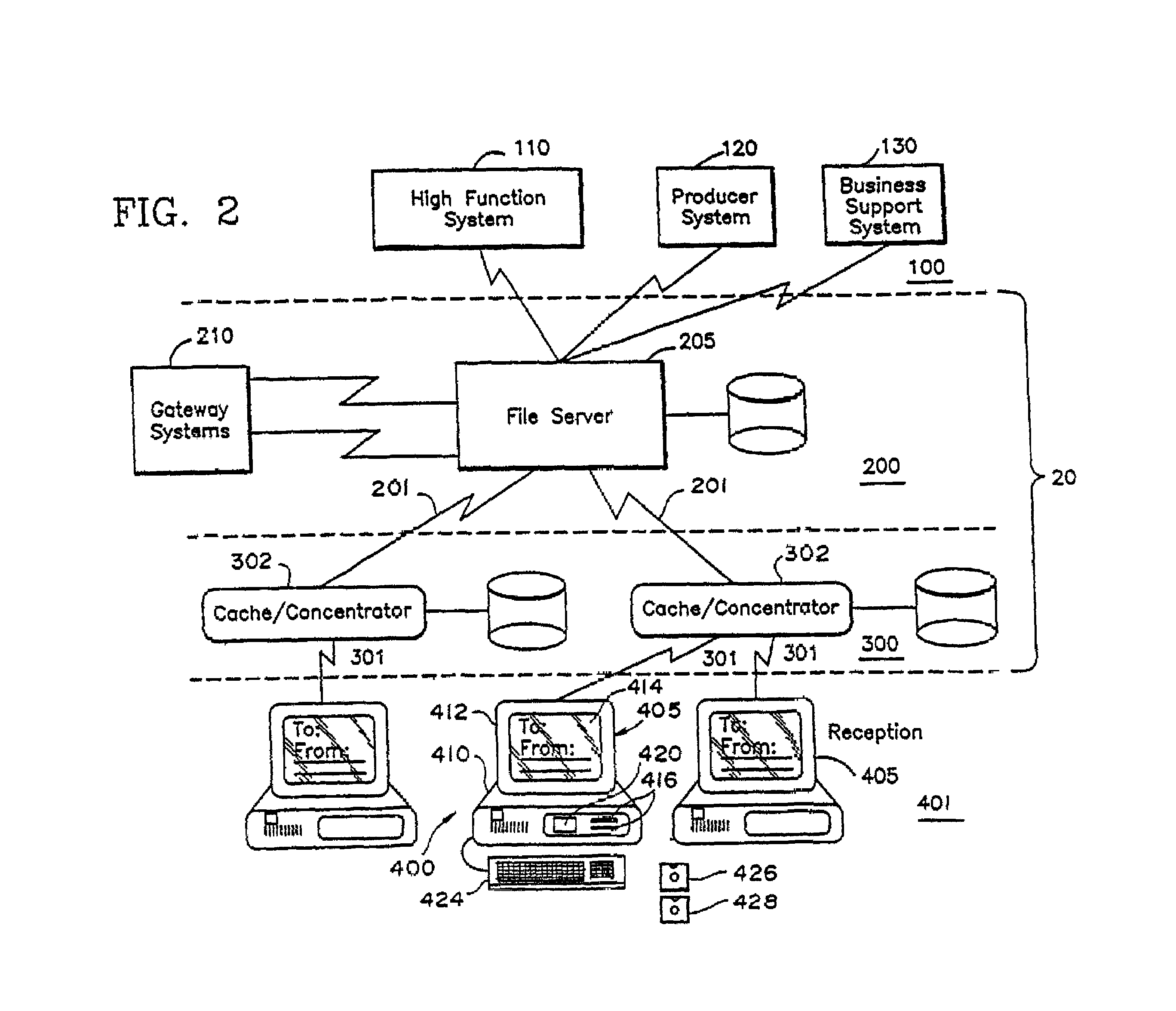Method for presenting advertising in an interactive service
a technology of interactive services and advertising, applied in the field of presenting advertising, can solve the problems of compulsion to expand computing resources, network slowdown, host size and complexity, etc., and achieve the effect of reducing minimizing the potential for interference between presentation, and increasing the likelihood of advertising
- Summary
- Abstract
- Description
- Claims
- Application Information
AI Technical Summary
Benefits of technology
Problems solved by technology
Method used
Image
Examples
Embodiment Construction
General System Description
[0032]FIGS. 1 and 2 show a network in which the method of the present invention for presenting advertising might be used. As seen the network, designated 10, includes a plurality of reception units within reception layer 401 for displaying information and providing transactional services. In this arrangement, many users each access network 10 with a conventional personal computer, e.g., one of the IBM or IBM-compatible type, which has been provided with application software to constitute a reception system (RS) 400.
[0033]As seen in FIG. 1, interactive network 10 uses a layered structure that includes an information layer 100, a switch / file server layer 200, and cache / concentrator layer 300 as well as reception layer 401. This structure maintains active application databases and delivers requested parts of the databases on demand to the plurality of RS 400's, shown in FIG. 2. As seen in FIG. 2, cache / concentrator layer 300 includes a plurality of cache / conce...
PUM
 Login to View More
Login to View More Abstract
Description
Claims
Application Information
 Login to View More
Login to View More - R&D
- Intellectual Property
- Life Sciences
- Materials
- Tech Scout
- Unparalleled Data Quality
- Higher Quality Content
- 60% Fewer Hallucinations
Browse by: Latest US Patents, China's latest patents, Technical Efficacy Thesaurus, Application Domain, Technology Topic, Popular Technical Reports.
© 2025 PatSnap. All rights reserved.Legal|Privacy policy|Modern Slavery Act Transparency Statement|Sitemap|About US| Contact US: help@patsnap.com



